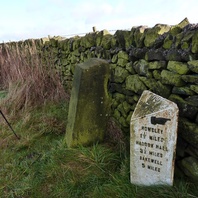
Viking Names
Great Rowsley
Great Rowsley, in the High Peak Hundred of Derbyshire, comes from either the Old Norse male personal name Hrólfr or the Old English male personal name Hroðwulf. The second element is Old English leah ‘A forest, wood, glade, clearing; (later) a pasture, meadow’, so if the first element is the Old Norse personal name then it is a hybrid place-name. The affix ‘great’ was a later addition to distinguish this Rowsley from Little Rowsley in the Darley Parish of the High Peak Hundred.
Read More
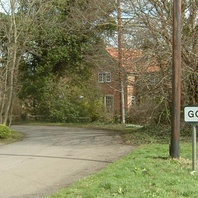
Viking Names
Gonalston
Gonalston, in the Thurgarton Wapentake of Nottinghamshire, comes from the Old Norse male personal name Gunnolfr and the Old English tun ‘farm, settlement’. It is thus a hybrid name, like Toton.
Read More

Viking Names
Maplebeck
Maplebeck, in the Thurgarton Wapentake of Nottinghamshire, is an Anglo-Scandinavian compound formed from Old English mapel ‘a maple tree’ and Old Norse bekkr ‘a stream, a beck’
Read More
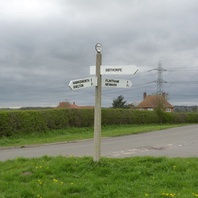
Viking Names
Sibthorpe
Sibthorpe, in the Newark Wapentake of Nottinghamshire, comes from either the Old English male personal name Sibba or the Old Norse male personal name Sibbi and Old Norse þorp ‘a secondary settlement, a dependent outlying farmstead or hamlet’.
Read More
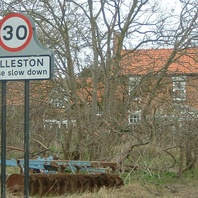
Viking Names
Rolleston
Rolleston, in the Thurgarton Wapentake of Nottinghamshire, comes from the Old Norse male personal name Hróaldr and the Old English element tun ‘farm, settlement’. It is thus a hybrid name like others nearby, such as Gonalston.
Read More
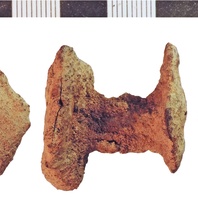
Viking Objects
Clench Nail (NLM-2FC690)
Clench nails were used in clinker-style ship-building from the 7th century to the 15th and also for domestic purposes, in which clench nails might appear where ship timber has been reused. Clinker ship-building involved building the ship’s hull first out of layered planks attached to the keel and held together using clench nails. Clinker-built boats and ships are particularly associated with the Vikings.
Read More
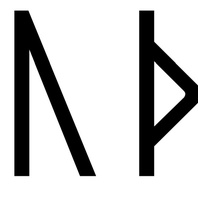
Viking Names
Gyda
Gyða appears early in Norway and is frequent there but it is not as common in Iceland. It appears in two Danish runic inscriptions and is common in other Danish sources. The name also appears in a few Swedish runic inscriptions and is found in later Swedish sources. Gyða is also attested in medieval documents from Lincolnshire and Domesday Book for Yorkshire. The name is a pet form of Gyríðr and it has been suggested that it was borrowed from England because several of the oldest carriers of the name appear to be of mixed Nordic and English origin.
Read More

Viking Names
Snarford
Snarford, in the Lawress Wapentake of Lincolnshire, is an Anglo-Scandinavian hybrid from the genitive singular form of the Old Norse male personal name Snǫrtr, i.e. Snartar, and Old English ford ‘a ford’. The ford crossed Barlings Eau and Snarford may have been situated on an ancient line of communication between Lincoln and the Wolds.
Read More
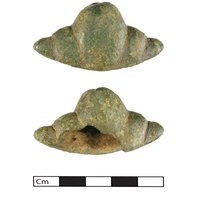
Viking Objects
Sword Pommel (NARC-E7AAF4)
An Anglo-Scandinavian copper-alloy sword pommel classed as a Petersen L type VI. The design is a fusion of Anglo-Scandinavian and Anglo-Saxon fashions. In many cases the design of the sword pommel is the only method of identifying the possible type and date of the sword it was attached to.
Read More
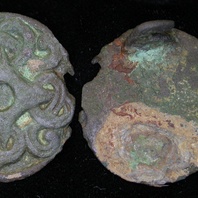
Viking Objects
Copper-Alloy Disc Brooch (LEIC-782CD2)
This Anglo-Scandinavian copper-alloy disc brooch has small traces of silvering on both surfaces. It is decorated in Borre-style interlaced knotwork matching the East Anglian type II. For more information on Scandinavian jewellery in England check out our blog: Brooches, Pendants and Pins: Scandinavian Dress Accessories in England.
Read More
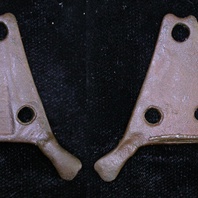
Viking Objects
Stirrup Mount (LEIC-AF8883)
This copper-alloy stirrup-strap mount is decorated with an unusual geometric pattern with incised lines running across its surface. It has been classified as a Williams Class A Type 8, but is probably a hybrid.
